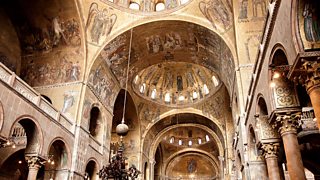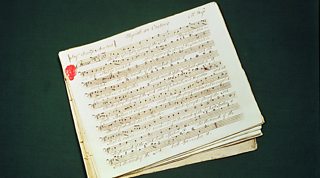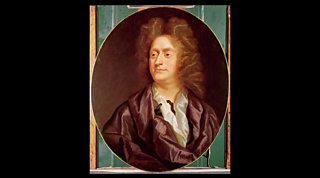Baroque History
A term originally employed in the context of the visual arts to describe extravagance or irregularity, the word Baroque has come to define a period in music in which the principle of contrast replaced the consistency of texture of the late Renaissance.
In the church music written for St Mark's in Venice by Giovanni Gabrieli and later Claudio Monteverdi, groups of performers of different kinds, vocal and instrumental, and placed in different parts of the building, created striking new spatial, harmonic and textural effects, typifying the new spirit.

A term originally employed in the context of the visual arts to describe extravagance or irregularity, the word Baroque has come to define a period in music in which the principle of contrast replaced the consistency of texture of the late Renaissance. In the church music written for St Mark's in Venice by Giovanni Gabrieli and later Claudio Monteverdi, groups of performers of different kinds, vocal and instrumental, and placed in different parts of the building, created striking new spatial, harmonic and textural effects, typifying the new spirit.
Opera had its origins at this time, designed originally for courtly celebration and modelled (at least in theory) on the drama of the ancient Greeks, which were believed to be sung throughout. In 1637 the first public opera house opened, and thereafter the new form spread all around Europe, with notable practitioners in France (Jean-Baptiste, Jean-Philippe Rameau), London (George Frideric Handel) and elsewhere.
Beyond the confines of the church a major new choral form, that of the oratorio, was developed initially in Italy and thereafter more widely. Dramatic in spirit (though unstaged), it usually presented Biblical stories in music: George Frideric Handel introduced it to England.
Large instrumental ensembles brought together for special occasions began to be regularised into the first permanent orchestras. For these new repertories of concertos were created by Arcangelo Corelli and Antonio Vivaldi in Italy, Johann Sebastian Bach in Germany and George Frideric Handel in London.
In the domestic setting, chamber music regularly comprised the four(!) players required for the trio sonata.
Solo harpsichord music flourished in the hands of Fran莽ois Couperin, Domenico Scarlatti and Johann Sebastian Bach.
A solo singer might engage with others and/or just with a continuo (usually harpsichord and cello) in a cantata - which would often take the form of an unstaged operatic scene.
While some composers specialised in one or two genres, others - such as Henry Purcell - excelled in virtually every available medium.
The World of Baroque
-
![]()
Find out more about the Baroque Spring season.
-
![]()
Listen to programmes about the major baroque composers and their music.
-
![]()
A series of personal reflections on J.S. Bach, his music and his world.
-
![]()
Visual guides to the lives of Bach, Handel, Purcell and Vivaldi.




